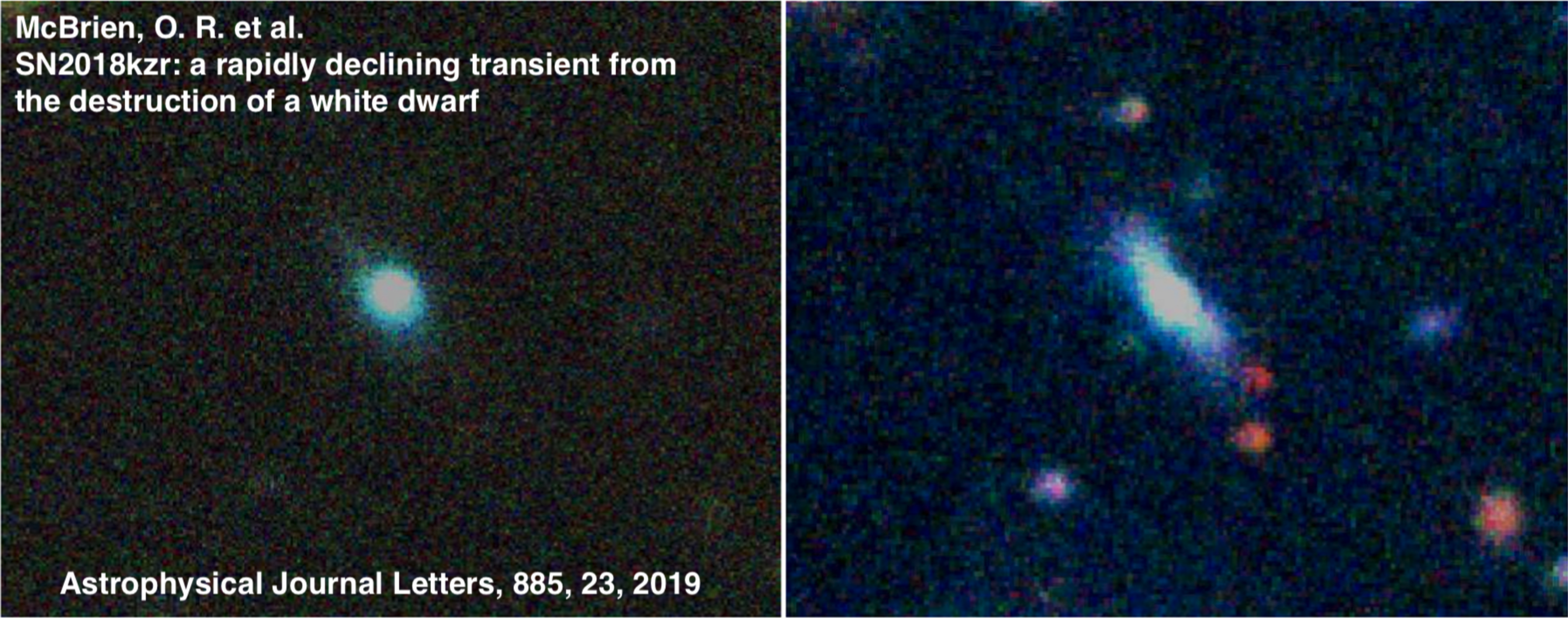100 science papers from PESSTO and its successor surveys
PESSTO and its successor surveys have reached 100 published, refereed science papers. The latest 3 papers to bring us to 100 have just been published, on two long gamma ray burst and a plausible candidate for the first neutron star - white dwarf merger.
Owen McBrien, a PhD student at Queen’s University Belfast lead an ApJ Letter on the unusually fast declining transient SN2018kzr. It is the fastest declining transient that either PESSTO or ePESSTO has followed other than the kilonova AT2017gfo. It was also quite luminous, meaning a combination of low ejecta mass and a central powering source are required to explain the remarkably fast fade and its peak brightness. A plausible explanation is the formation of a magnetar during the merger of a white dwarf and a neutron star, although accretion induced collapse of a white dwarf is also possible. The ePESSTO spectra show a chemical composition compatible with the destruction of a white dwarf.

The other two papers are on long gamma ray bursts. Andy Melandri led the ePESSTO GRB science team with a paper on another identification of an emerging supernova in long GRB detected by Fermi at the rather large redshift of t z = 0.33. This is one of the few high redshift SNe for which spectroscopic identification of the type Ic supernova and a host galaxy analysis have been possible.
Finally, in a paper published in Nature the MAGIC collaboration detected the highest energy photons ever from a GRB, in the teraelectronvolt range (1012 eV). The remarkable emission from GRB190114C is associated with the afterglow and is explained by inverse Compton scattering of photons by high energy electrons. ePESSTO contributed to the multi-frequency campaign on GRB 190114C, which showed that such conditions for TeV emission may be typical for GRBs and that inverse Compton emission may be more commonly produced than previously thought.
